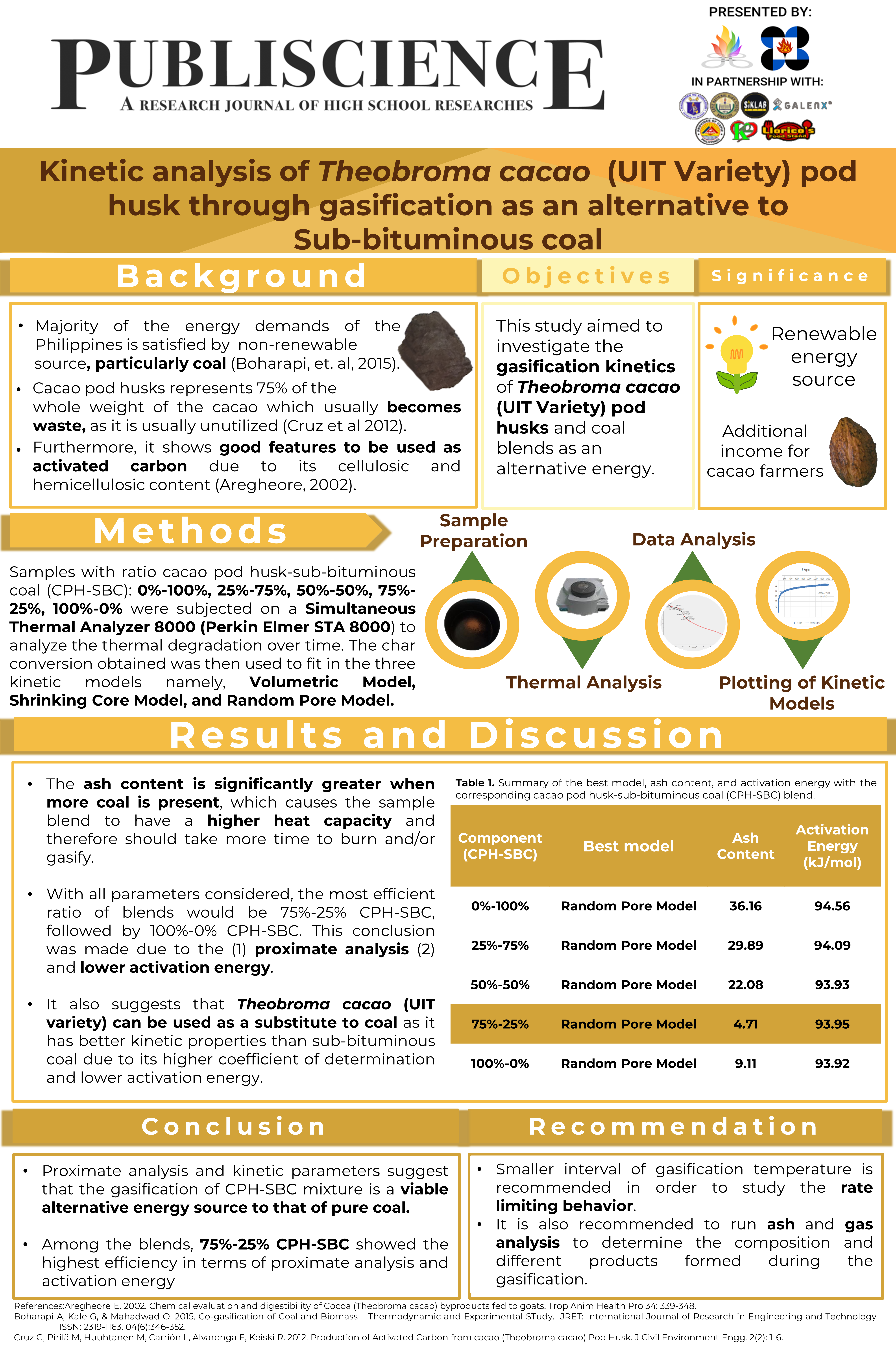Kinetic analysis of Theobroma cacao (UIT Variety) pod husks through gasification as an alternative to sub-bituminous coal
KIMBERLY SHAYNE S. TUKASIM, CHRISTIAN MARC P. BEÑOSA, MICKEL LYLE ANGELO E. PE, and FERNANDO CHRISTIAN C. JOLITO III
Philippine Science High School – Western Visayas Campus, Brgy. Bito-on, Jaro, Iloilo City 5000, Department of Science and Technology, Philippines
Abstract
Co-gasification of biomass and coal is emerging as a potential clean fuel technology as it reduces greenhouse gas emissions, lowers gross power output, and increases thermal efficiency. The present study aimed to determine the potential of Theobroma cacao (UIT Variety) pod husks as an alternative to coal by investigating the gasification kinetics The proximate composition of five sample blends of cacao pod husks and sub-bituminous coal (CPH-SBC): 0%-100% wt/wt, 25%-75% wt/wt, 50%-50% wt/wt, 75%-25% wt/wt, 100%-0% wt/wt, were determined using the STA 8000 in a nitrogen-enriched atmosphere at 900°C. The conversion-time data obtained were fitted using the three different kinetic models namely: Volumetric Model (VM), Shrinking Core Model (SCM), and Random Pore Model (RPM). Results showed that the blend 75%-25% CPH-SBC is the most effective in terms of the overall proximate composition. Among the three kinetic models, the RPM had the best fit, having R2=0.964, with the data, suggesting that the growth of the pores and coalescence of the pores causes a reduction of area through a combination of overlapping of pore surfaces. The activation energy of the blends, according to the best fit model, ranged from 93.919 kJ/mol to 105.73 kJ/mol. Based on the results, it can be concluded that Theobroma cacao (UIT Variety) pod husks can indeed act as a substitute to sub-bituminous coal.
Keywords: co-gasification, biomass, coal, proximate composition, kinetic modeling


